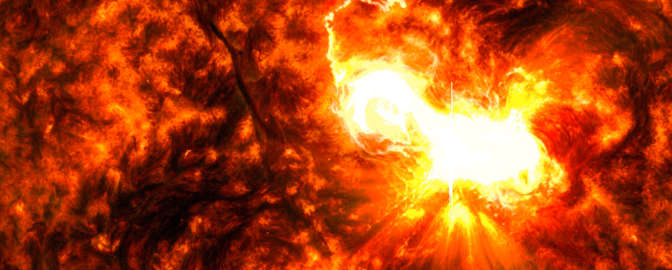The Downlink • Dec 16, 2022
Capturing the Cosmos
Space Snapshot

This mesmerizing view of merging galaxies captured by JWST is just one of the images highlighted in the December solstice issue of The Planetary Report, which looks back on the year in pictures. You can read the magazine for free online, and Planetary Society members receive a hard copy in the mail. Image credit: NASA/ESA/CSA, L. Armus & A. Evans; acknowledgment: R. Colombari.
You love space, now take action
This weekly newsletter is your toolkit to learn more about space, share information with your friends and family, and take direct action to support exploration. Anyone can subscribe at planetary.org/connect to receive it as a weekly email.
Fact Worth Sharing

The earliest images taken in space were captured on film, which then had to be returned to Earth for development in photo labs. At a distance of 1.5 million kilometers (1 million miles) from Earth, it’s a good thing JWST doesn’t have to do the same.
Mission Briefings


Orion’s return to Earth completes the Artemis I mission. NASA’s Orion spacecraft splashed down in the Pacific Ocean west of Baja California on Sunday morning, ending its successful uncrewed mission around the Moon. Orion was in space longer than any previous spacecraft designed for astronauts, not counting those that docked to a space station. While in a distant lunar orbit, Orion also broke another record, traveling farther from Earth than any human-rated spacecraft. Image credit: NASA.

The SOFIA flying telescope is heading to a museum. The Stratospheric Observatory for Infrared Astronomy (SOFIA) was a joint mission between NASA and the German Space Agency. A 2.7-meter (106-inch) reflective telescope was mounted aboard a modified Boeing 747SP airplane that had previously flown for nearly 20 years as a commercial aircraft for PanAm and United Airlines. After eight years of scientific research, SOFIA has now been retired and will soon move to a new home in the Pima Air & Space Museum in Tucson, Arizona.
From The Planetary Society


Want to land on Mars or land atop bestseller lists? You’ve got to get creative. As part of outgoing Planetary Radio host Mat Kaplan’s farewell tour of favorite guests, this week he chats with JPL Chief Engineer Rob Manning and Andy Weir, author of The Martian and other sci-fi bestsellers. Throughout their energetic and humorous discussion, the three keep coming back to the essential role that creativity plays in space exploration and in life. Pictured: A creative view of what human exploration of Mars might look like. Image credit: NASA/Pat Rawlings, SAIC.

NEO Surveyor is confirmed — here’s what that means and why it matters. The asteroid-hunting NEO Surveyor mission is officially in its development phase. Planetary Society Chief Advocate and Senior Space Policy Adviser Casey Dreier explains why this is a huge step forward for the mission, and how it’s an advocacy victory for The Planetary Society and our members.
Make a year-end gift that goes the distance

The Planetary Fund powers our mission to explore worlds, find life, and defend Earth. Right now, any donation you make will go twice as far thanks to a $100,000 matching gift by a generous Society member. With your support, 2023 will be another great year for advancing space science and exploration.
What's Up

Mars rises in the east around sunset, looking bright red. Jupiter is high in the sky looking very bright, with Saturn farther to the west looking yellowish. Mercury is visible low on the western horizon shortly after sunset. December still has more celestial treats in store; learn more in our guide to the month’s night skies.
Wow of the Week

Planetary Society member and artist Barbara Fee Sheehan created this view of the Earth from beyond the Moon, inspired by a photo taken by NASA’s Lunar Reconnaissance Orbiter. She finished the piece the day the Orion spacecraft splashed down, perhaps having captured similar views during its mission around the Moon. The piece is made of thousands of glass seed beads, broken glass shards, tiny pebbles, and glitter. Barbara says of this and an accompanying piece, “The photos do not do them justice, as they shine like a star when seen in person."
Send us your artwork!
We love to feature space artwork in the Downlink. If you create any kind of space-related art, we invite you to send it to us by replying to any Downlink email or writing to [email protected]. Please let us know in your email if you’re a Planetary Society member!


 Explore Worlds
Explore Worlds Find Life
Find Life Defend Earth
Defend Earth

